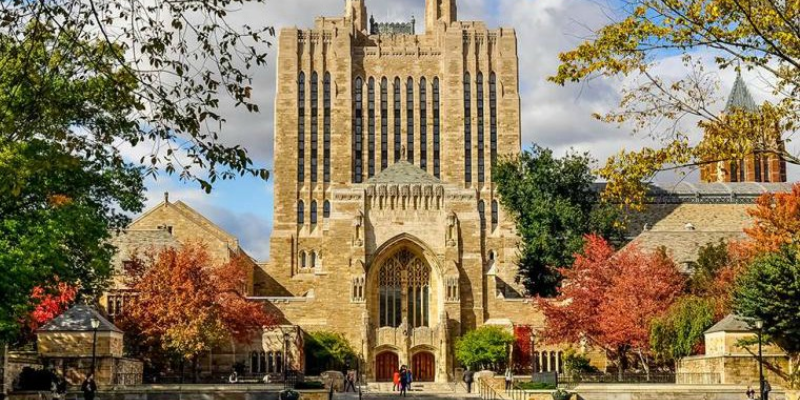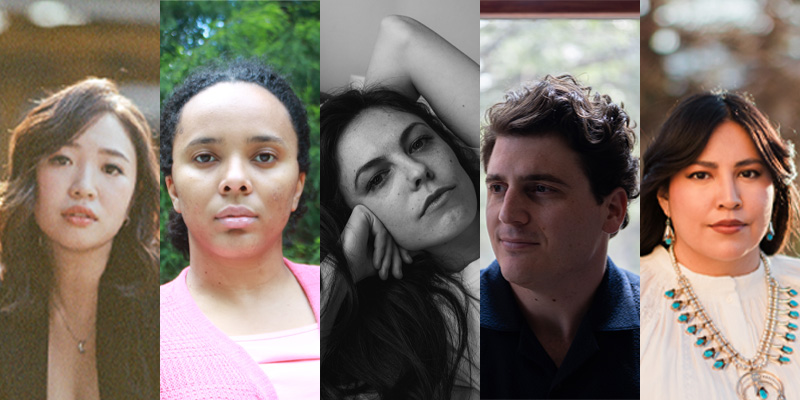In the autumn of 1900, the twenty-four-year-old Rainer Maria Rilke was suffering from writer’s block. He had recently returned from the second of two trips to Russia, and it was beginning to dawn on him just how feeble his poetry had been up to this point. Under the tutelage of the far more experienced Lou Andreas-Salomé – the brilliant proto-feminist who had famously turned down Nietzsche in the early 1880s, and who had somewhat implausibly taken the callow young Rilke as her lover in the late 1890s – René had been reborn as Rainer, rebaptized with purer purpose. His poetry, however, was anything but purposeful, riddled as it was with romantic clichés and recycled sentiment. Rilke, it is fair to say, was one of the weakest poets of the nineteenth century.
That he would go on to become one of the strongest poets of the twentieth century, the Orpheus of modernism, is one of the great stories of artistic development. Few learning curves have been as steep as that of the young René Rilke; few narrative arcs as accelerated as that of the mature Rainer Maria Rilke. In the space of a few short years, he went from wallowing in windswept woods to writing some of the most perfect poems in German. What fuelled this extraordinary take-off?
It is impossible to understand Rilke’s work without taking account of his life, not least because he took such pains to manage his own mythology. His self-image – as an exquisitely sensitive artist, uniquely attuned to the rhythms of the universe – led to often problematic relationships with mere mortals. Many of his most cherished ideas, such as the importance of solitude or his doctrine of “intransitive love”, reflect a deep-seated, almost pathological need to protect his poetry at whatever emotional or financial cost. That this cost was often paid by others was the price, as Rilke saw it, of the life artistic.
With anniversaries due this year and next – born in 1875, Rilke died in 1926 – two new biographers have set out to chronicle this life. It is no easy task, partly on account of previous attempts (numerous biographies already exist, above all Ralph Freedman’s towering Life of a Poet, 1996) and partly because Rilke can be so ingratiating and unlikeable. The problem is compounded by the fact that his work is often reduced, in literary legend, to a few well-climbed summits – the animal poems, such as “The Panther”, the thing poems, such as “Archaic Torso of Apollo”, the long-awaited explosion of elegies and sonnets in the Swiss mountain tower – such that the valleys in between can disappear from view. Illuminating these valleys is the task of the biographer.
As their books’ respective subtitles suggest, Sandra Richter and Manfred Koch take different approaches to this task. Richter concentrates on the open life, presenting the poet’s various phases as so many “biographemes”; Koch foregrounds the poetry, reading Rilke’s work as an expression of his “angst”. Where did this angst come from? The psychoanalytic reading that Rilke resisted – mediated by Andreas-Salomé, he met Sigmund Freud in 1913, but kept a careful distance, fearing that driving out his demons might mean losing his angels – would point to his childhood. Born two months premature, into the German-speaking minority in Prague; cosseted by an anxious mother who had previously lost a stillborn daughter; dressed as a girl and addressed by turns as “Sophie” or “Ismene”: the young René was anything but the rugged young go-getter for whom his underachieving father had hoped. Military school at the age of ten was the solution proposed, with predictably catastrophic results. It is hard to imagine an environment less suited to a slight, effete aesthete.
Not every bullied boy, nonetheless, becomes a poet. Rilke’s facility with words began to emerge in adolescence, with his first publications in school pamphlets and private printings. If his early work – essentially, that of the 1890s – suggests too facile a facility, it is typical of its time. Collections such as Larenopfer (1895) and Traumgekrönt (1896) are nothing if not documents of the fin de siècle. They radiate a strong desire to become a poet, just not yet the experience to be one.
The encounter with Andreas-Salomé in 1897 kickstarted Rilke’s lifelong talent for becoming. Fifteen years older and firmly established as an intellectual in her own right, she was both femme fatale and femme de lettres; for the young Rainer, as she rebaptized him, she was both lover and mother. That he had so much to learn was part of his appeal: she resolved to toughen him up, to give him a clarity and focus beyond the dreamy vagueness – and occasional petulance – of his youth. The trips to her native Russia were part of this, although it has to be said that they were only semi-successful. Rilke’s reports of his audience with the ageing Leo Tolstoy make for painful, almost comic reading, as he attempts desperately to salvage his pride at being snubbed; his vision of Russia as a wide, open country full of monks and peasants hardly rises above caricature. Still, out of these trips emerged the three parts of Das Stundenbuch (1899–1903), an idiosyncratic attempt at devotional verse that stands as Rilke’s first significant work.
On his return from Russia, Rilke found his way to the artists’ colony of Worpswede, in northern Germany. In the empty moorlands, reminiscent of Russia, he met, and hesitated between, two talented women: the painter Paula Becker and the sculptor Clara Westhoff. Once the former had announced her engagement to the painter Otto Modersohn, Rilke became engaged to the latter; in 1901, their daughter Ruth was born. Clara also had a significant influence on Rilke’s aesthetics, encouraging him to adopt sculpture (and, to a lesser extent, painting) as a paradigm for poetry. At her instigation – and fleeing the dreaded pram in the hallway – Rilke moved to Paris to study the master, Auguste Rodin.
It was at this point that Rilke’s major work began. Koch’s biography acknowledges as much by starting, counterintuitively, with death in Paris, and in particular with the novel that would ultimately emerge from this period, The Notebooks of Malte Laurids Brigge (1910). The protagonist, Malte – a young poet who is essentially a placeholder for the author, as Richter shows by drawing on Rilke’s unpublished diaries – sees death everywhere around him in the modern metropolis, drawn as he is to dispossessed figures such as beggars and street sellers. While it has become something of a trend in contemporary criticism to reclaim Malte as Rilke’s central achievement – a way, perhaps, of pushing back against the kitschier excesses of the poetry by foregrounding the harder, expressionist prose – it allows for some nice comparisons across the genres. Richter sees Rilke’s prose, in contrast to his poetry, as refusing redemption; Koch works in the other direction, seeing Rilke’s emblematic panther not as an objective “thing”, but as a subjective sufferer, trapped in his cage in the same way that Malte’s marginalized figures are trapped in their city. Both biographers agree that the early prose is significantly stronger than the poetry, functioning as social criticism – at times even, as satire – of fin de siècle Prague.
“Learning to see”, to cite Malte’s famous formulation, took several forms in the Parisian years. Central among these was the influence of Rodin on Rilke’s new sculptural aesthetics. Koch offers excellent readings of the Neue Gedichte (1907–8) in this light, noting Rilke’s habit of “killing his things” – the tired panther, the mute stone of the archaic torso – so that he can then triumphantly reawaken them. Here as elsewhere, Koch demonstrates an impressive ear, noting for instance Rilke’s weakness for the letter w – pronounced like the German word for pain, Weh – or the preponderance of u-sounds in the later elegies.
By 1907, Rodin was gradually being replaced by Cézanne as the poet’s tutelary figure. Rilke could never sit still for long – witness his constant travels, helpfully identified by Koch as following an east-west axis from Russia to France until 1902, then a north-south axis from Italy to Scandinavia until 1914 – and it was inevitable that he would fall out with the overbearing sculptor. A mentor on canvas, safely dead, was a much better match, as the Letters on Cézanne (1907) attest. They also attest, in their very attempt to move beyond the sculptural paradigm, to Rilke’s enduring instinct for self-development: his “monkish seclusion and seeming softness” belied “a fanatical and unwavering mentality”, in the words of the painter Heinrich Vogeler. The poet was determined to focus on his poetry, to the exclusion of all else.
This included his own family. Rilke’s neglect of his wife and child can appear appalling: he didn’t attend his daughter’s wedding in 1922, preferring to work on his elegies and sonnets, and never met his son-in-law and granddaughter. The biographers strain to avoid judgement, tactfully referring to Rilke as a “correspondence father”. This distance is all the more surprising given his lifelong interest in childhood, and in particular in the idea of accomplishing childhood, as he puts it in Malte. The novel concludes with a reworking of the parable of the prodigal son – with a focus not on his triumphant return, but on his liberating decision to leave. Perhaps Rilke wanted, as he put it in a letter of 1925 to Ruth, to be a prodigal father.
After finishing the Neue Gedichte, Rilke struggled to complete Malte for a long time, finally finishing it at the house of his publisher, Anton Kippenberg, in 1910. The years of gestation left him exhausted. “I feel a bit like a rocket that has fallen into the bushes”, he wrote in 1911; “I huff and I puff but it gets me nowhere”. Rilke offered this image to Prinzessin Marie von Thurn und Taxis, the most important in a long line of well-born patronesses who supported his life and work. Lending him her castle on the Adriatic coast, complete with chef and chauffeur – Dottor Serafico, as she called him, was delighted – she would go down in literary history as the princess who made possible the Duino Elegies.
Their descriptions of the much-mythologized moment in January 1912 exemplify the differences between the two biographers. For Koch, the famous opening of the First Elegy supposedly whispered to Rilke by the wind – “Who, if I were to cry out, would hear me among the angelic / orders?” – is an expression of sexual frustration, as suggested by the poet’s own reports of feverish masturbation and the textual evidence of the Third Elegy, with its “river-god of the blood”. For Richter, it was triggered by lawyers, more specifically by Rilke’s frustration at receiving a letter announcing the failure of his divorce. Perhaps, in the end, they amount to the same thing.
Rilke’s inability to complete the Duino Elegies would set the rhythm for the next ten years. Haunted by his vision of a complete cycle, chasing the angel like an addict chasing his first hit, he travelled to Spain in search of inspiration in El Greco’s Toledo. He knew he had to move beyond the “work of the eyes” of his Parisian period, to the “heart-work” that lay within him, but he could not find a way to give it full expression. Despite the constant travelling and increasing reading – Friedrich Hölderlin, in Norbert von Hellingrath’s new edition, was one particularly important discovery in these years – he struggled to create anything substantial. As his writing waned, his womanizing waxed: Rilke pursued a string of brief relationships with younger artists such as the pianist Magda von Hattingberg and the painter Baladine Klossowska, giving them mythical, magical names like Benvenuta, Nike, or Merline. The pattern was always the same: initial euphoria, quickly followed by a renewed need for solitude. Heart-work was hard work.
The outbreak of war forced Rilke to stop moving. Exiled from Paris as an enemy citizen, he settled initially in Munich, before being called up, in 1916, to serve in the Austrian army. Well-placed friends once again came to his rescue, securing him a berth in the archives in Vienna alongside other leading writers such as Stefan Zweig. The end of the war, as both biographers emphasize, saw Rilke becoming surprisingly politicized, hovering on the edges of the short-lived People’s State of Bavaria led by Kurt Eisner. As Richter judiciously remarks, Rilke was no political poet, but nor was he apolitical.
The end of the war, and the end of the People’s State, meant that Rilke had to leave Munich. Effectively stateless following the break-up of the Austro-Hungarian Empire, and pursued by his customary financial difficulties – Richter, in particular, is excellent on his constant requests for money, mediated as ever through his long-suffering publisher, Kippenberg – Rilke accepted an invitation to tour Switzerland. After moving there in the autumn of 1919, he barely ever left it again.
Once Rilke had found his tower in Muzot in the summer of 1921, the scene was set for the great achievement of these later years. Although a chateau, Muzot was anything but luxurious – there was no electricity or running water, the rooms were small and the ceilings low – but it offered the one overriding quality that Rilke was seeking: solitude. Insisting on an uneducated housekeeper who had never heard of him, the poet persuaded Werner Reinhart, yet another rich patron, to rent it for him. The restless Rilke had found his refuge.
It was in Muzot, famously, that one of the most astonishing months in the history of lyric poetry took place. Just as Duino, ten years earlier, had made possible the beginning of the Elegies, so Muzot now prompted, finally, their completion. First came the Sonnets to Orpheus: between February 2 and 5, 1922, the first part – twenty-six poems – poured out in a giddy rush. As though in counterpoint to their tight rhymes and metrical patterns, the remaining Elegies followed between February 7 and 11, rounded off by a second set of sonnets in the second half of the month. For all their formal differences – signalled by Rilke’s composition of them at two separate pulpits – the Elegies and Sonnets share a common set of preoccupations, above all the celebration of the world through the celebration of Orphic language. Rühmen (“praise”) emerges as the key to Rilke’s poetics – “Praising, that’s it!” – transforming elegy into ecstasy through enchanted rhythms and seductive cadences. If his writing had always functioned as “sublimated phallicism”, in the words of his friend Rudolf Kassner, it was only now that it found full expression, sublimated into the gender fluidity that had defined him since childhood.
Rilke’s final years were a coda to these major achievements. With the sense that his life’s work was now done, he became more playful, notably moving into French in the search for a lighter, less metaphysically freighted mode of expression. More than 400 poems were produced in this second language, mostly bucolic celebrations of the beautiful Valais landscape – and, in particular, of his beloved rose garden. Paul Valéry, by this point, had become Rilke’s principal model (Rilke had translated “Le Cimetière marin” in 1921, followed by the rest of Charmes in 1923), and something of Valéry’s music can be heard in his apostrophizing of nature. For a poet of Rilke’s sensitivity, the shift in language was above all musical, with whole poems dedicated to single words such as verger. Late German-language poems such as “Gong” suggest, in fact, that the whole arc of Rilke’s work follows a gradual shift away from the “work of the eyes” to that of the ears. Orpheus, as Koch notes, is also “Ohr-pheus”, a god of hearing.
For a poet so extraordinarily attuned to hearing, what can biographies add? Is it not his engagement with language that matters? Recent works of philology – Charlie Louth’s The Life of the Work (TLS, September 3, 2021) or Christoph König’s critical edition of the Duino Elegies (TLS, March 15, 2024), have placed renewed emphasis on textual interpretation in Rilke scholarship. But biography has its insights too. Beyond dispelling some of the myths – the rose on which Rilke pricked his finger in October 1926 did not kill him, since he was already dying of leukaemia – both biographers provide valuable context to the texts, for the ways in which they emerged out of Rilke’s brief passions and longer retreats. Orpheus could also be ordinary.
Inevitably, they recycle the better-known anecdotes and episodes. Sandra Richter’s whole approach, in fact, is episodic, picking out significant moments and meetings to suggest a composite picture of the poet’s life. She is particularly good on the lifestyle, giving us a real sense of Rilke the man (a strict vegetarian, he drank copious amounts of coffee, measured barely 1.65 metres and could sleep for fourteen hours at a stretch). The flip side is that we get little sustained sense of the work: the biography barely mentions major publications such as TheBook of Hours or the New Poems, and almost the only poem quoted in full comes at the end, with the final poem Rilke ever wrote. It is a shame, given the author’s access to the archives in Marbach – where an exhibition is planned to mark Rilke’s 150th birthday on December 4 – that her insights into the life are not more extensively linked to the work.
Koch, on the other hand, provides a full and nuanced engagement with both the life and the work. His readings are excellent: informed by his overarching concept of “angst”, they tend to the psychosexual (he is not afraid to foreground Rilke’s pathological onanism), but they remain rooted in the encounters and events of a busy existence.
Rilke’s vast correspondence – he wrote tens of thousands of letters over the course of his lifetime, with new ones still coming to light – is a mixed blessing for the biographer, since it can distract from the reasons why we are interested in the poet in the first place. Manfred Koch nonetheless strikes an admirable balance between anecdote and analysis. Whether openly or anxiously, personally or poetically, a century after his death the ordinary Orpheus continues to fascinate.
Ben Hutchinson is German editor of the TLS. His books include Rilke’s Poetics of Becoming, 2006
The post The Panther in his cage appeared first on TLS.

 By Times Literary Supplement | Created at 2025-03-26 14:07:26 | Updated at 2025-04-03 09:36:44
1 week ago
By Times Literary Supplement | Created at 2025-03-26 14:07:26 | Updated at 2025-04-03 09:36:44
1 week ago






